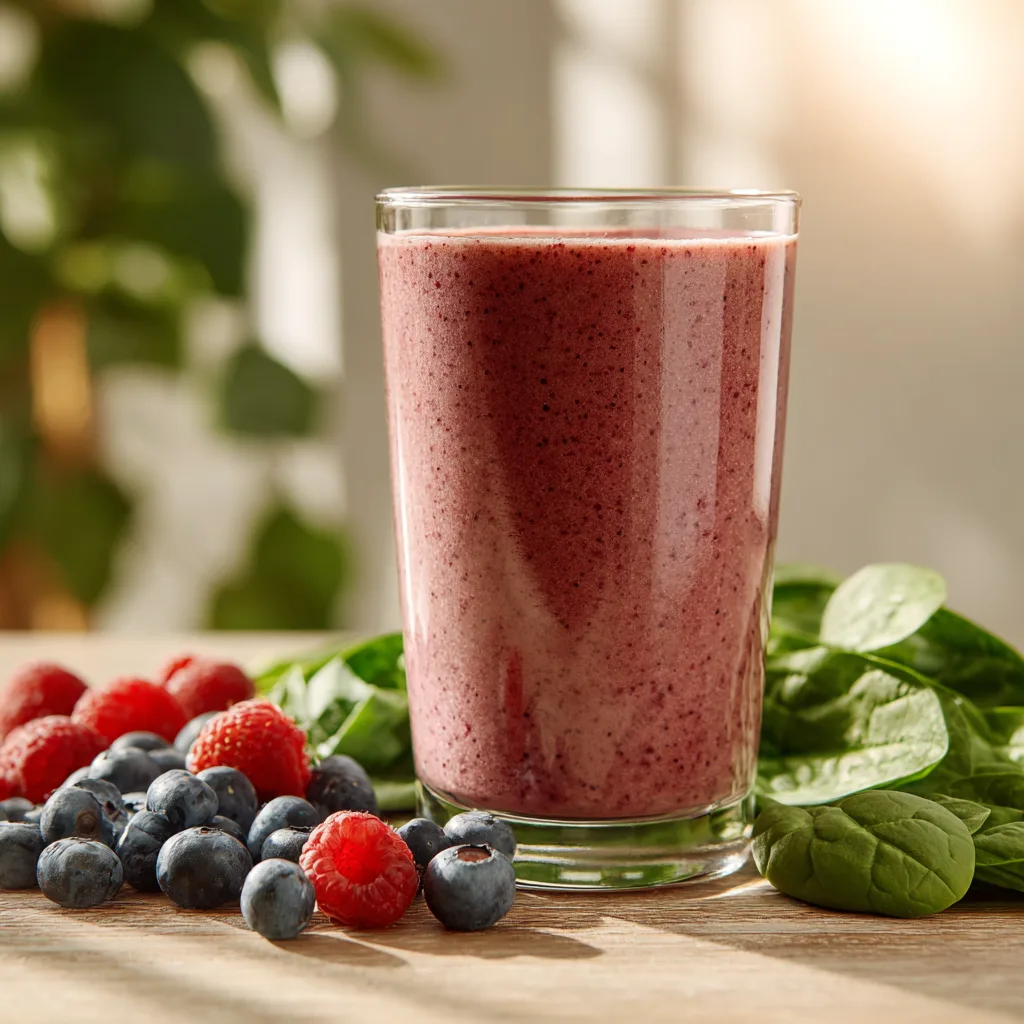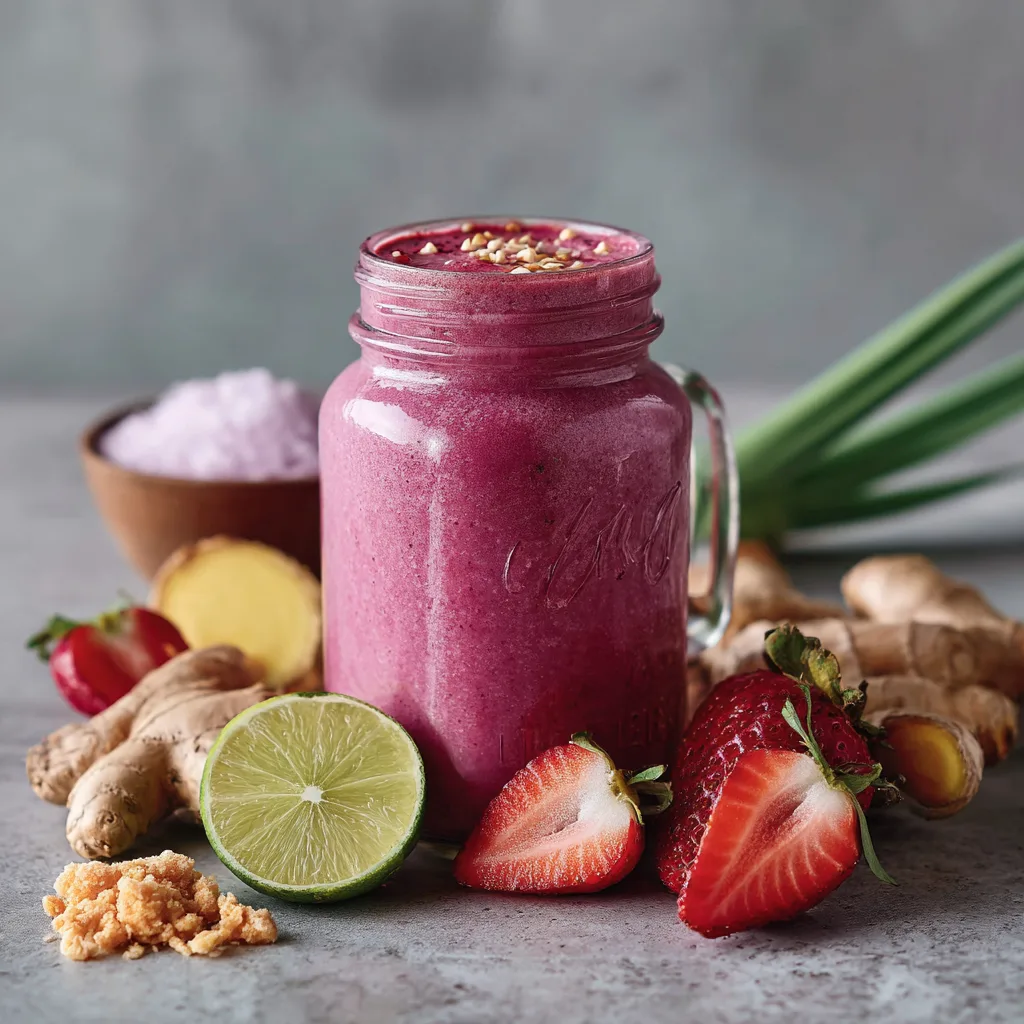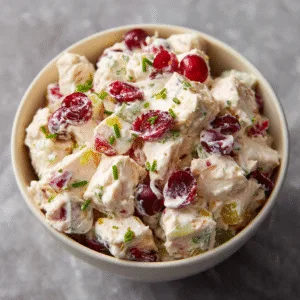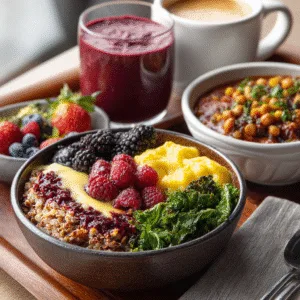If you’re managing diabetes, finding delicious and safe meal options can feel overwhelming. That’s where diabetic smoothie recipes come in—simple, nutrient-packed blends that support stable blood sugar levels without sacrificing flavor. In this article, we’ll explore why smoothies can be a smart part of your diabetes plan, what ingredients to use (and avoid), and share easy-to-make recipes that are low in sugar, high in fiber, and taste amazing. Whether you need a quick breakfast or a satisfying snack, these diabetic-friendly smoothies offer balance, energy, and variety—perfect for your daily routine.
Table of Contents
Table of Contents

Why Smoothies Can Be Smart for Diabetics
What Makes a Smoothie “Diabetic-Friendly”?
When I first started watching my blood sugar, I worried smoothies would be off-limits. All that fruit? Too much sugar, right? But I quickly learned that with the right ingredients, diabetic smoothie recipes can be both blood sugar-friendly and absolutely delicious. The secret lies in how you build them.
To keep your smoothie diabetic-friendly, you need balance. That means high-fiber vegetables like spinach or kale, healthy fats like avocado or chia seeds, and protein from Greek yogurt, unsweetened nut milk, or even a spoonful of peanut butter. These nutrients slow down how your body absorbs sugars—helping to prevent spikes.
Avoid high-sugar bases like fruit juice or sweetened yogurt. Instead, opt for low-glycemic fruits like berries or green apples, which add natural sweetness without overwhelming your system. And don’t forget to include sources of healthy fat and fiber. These are key to supporting stable blood sugar levels and helping you feel full longer.
To explore more low-sugar ideas that support healthy eating, check out our full guide on low sugar breakfast ideas and delicious sugar-free dessert recipes. Both offer helpful inspiration beyond smoothies and can round out your diabetic-friendly meal planning.
Common Smoothie Mistakes for Diabetics
Avoiding Hidden Sugar Traps
One of the biggest mistakes people make with diabetic smoothie recipes is loading them with sugar without realizing it. Yes, even “healthy” ingredients can be sneaky. Flavored yogurt, fruit juice, honey, or even overripe bananas can quickly tip your smoothie into a sugar bomb.
Portion size also matters. A blender full of smoothie might seem healthy, but it can be equal to eating three servings of fruit in one go. For most people managing diabetes, 1 cup (or about 8 oz) is a good portion to start with. Test your blood sugar if you can, and adjust accordingly.
Another issue? Skipping protein and fat. Without these, your smoothie will digest too fast, leading to spikes. Always add protein (like nut butters, protein powder, or Greek yogurt) and healthy fats (chia, flaxseed, avocado). They’re not just for balance—they’re essential.
If you’re new to smoothies, start with a simple guide like our beginner smoothie recipes or try a refreshing green detox smoothie tailored for better energy and balance.
Print
Diabetic Smoothie Recipes: 7 Powerful Blends That Work
- Total Time: 5 minutes
- Yield: 1 serving 1x
Description
A low-sugar, high-fiber diabetic smoothie made with berries, spinach, chia seeds, and almond milk. Balanced for steady energy and blood sugar control.
Ingredients
- ½ cup frozen mixed berries (blueberries, raspberries)
- 1 cup unsweetened almond milk
- 1 small handful fresh spinach
- 1 tablespoon chia seeds
- ¼ avocado A pinch of cinnamon
Instructions
- Add the almond milk to a blender.
- Toss in the frozen berries and spinach.
- Add chia seeds and avocado.
- Sprinkle in cinnamon.
- Blend until smooth and creamy.
- Pour into a glass and enjoy immediately.
Notes
You can substitute spinach with kale for more fiber. To increase protein, add a scoop of unsweetened protein powder. Use ground flaxseed in place of chia seeds if preferred.
- Prep Time: 5 minutes
- Cook Time: 0 minutes
- Category: Smoothie
- Method: Blending
- Cuisine: Healthy
Nutrition
- Serving Size: 1 cup (8 oz)
- Calories: 180
- Sugar: 7g
- Sodium: 100mg
- Fat: 10g
- Saturated Fat: 1.5g
- Unsaturated Fat: 8.5g
- Trans Fat: 0g
- Carbohydrates: 14g
- Fiber: 8g
- Protein: 4g
- Cholesterol: 0mg
Top Diabetic Smoothie Recipes You’ll Actually Love
Berry + Spinach Power Smoothie
Let’s kick things off with one of my personal favorites—a diabetic smoothie recipe that tastes like a treat but supports stable blood sugar. Berries are naturally lower in sugar than most fruits and loaded with antioxidants. Spinach brings in fiber and iron, but its flavor is so mild, you barely notice it’s there.
Here’s a basic combo that works beautifully:
- ½ cup frozen mixed berries (blueberries, raspberries)
- 1 cup unsweetened almond milk
- 1 small handful fresh spinach
- 1 tablespoon chia seeds
- ¼ avocado
- A pinch of cinnamon
This blend gives you a balance of carbs, fiber, and healthy fats. Cinnamon may even help with blood sugar control, making this smoothie even more powerful. It’s ideal for breakfast or a midday snack when your energy dips.
If you’re short on time, our 5-minute fruit smoothie bowl can be easily adapted for low sugar. You can also explore low-calorie smoothie recipes that double as light meals or snacks.
Chocolate Peanut Butter Protein Shake
Who says diabetic smoothie recipes have to be bland? This one tastes like dessert but is designed to keep your blood sugar steady and cravings in check. It’s packed with protein, fiber, and healthy fats—all crucial for blood sugar balance.
Try this:
- 1 scoop unsweetened chocolate protein powder
- 1 tablespoon natural peanut butter
- ¾ cup unsweetened almond or soy milk
- 1 tablespoon ground flaxseed
- Ice, to desired texture
The key here is choosing unsweetened and low-carb ingredients. Peanut butter and flaxseed provide satiating fats and fiber, while the protein powder keeps you full and fuels your body. If you want a more plant-based twist, our vegan smoothies offer lots of blood-sugar-friendly options. For those on a weight loss journey, the weight loss smoothie guide can help you build meals that are both nourishing and effective.

Green Smoothies That Stabilize Blood Sugar
Avocado & Cucumber Green Smoothie
This refreshing green blend is one of those diabetic smoothie recipes that feels almost like a spa treatment—cool, light, and super hydrating. It’s also loaded with healthy fats and fiber, two nutrients that help slow sugar absorption and keep blood glucose levels steady.
Here’s how to make it:
- ½ avocado
- ½ cucumber, peeled and sliced
- 1 cup unsweetened almond milk
- Juice from ½ lemon
- A few fresh mint leaves
- Ice for texture
Avocado delivers healthy monounsaturated fats while cucumber and lemon help flush excess sodium and support hydration. Mint brightens the flavor, making this smoothie ideal for hot days or post-workout recovery. It’s one of those blends that feels light but keeps you full for hours.
Need more ideas like this? Our best-ever green smoothie recipes are packed with low-sugar, high-fiber combinations. And if you want something easy to prep in advance, check out our Morning Smoothies Recipes to always have something healthy on hand.
Carrot Ginger Anti-Inflammatory Smoothie
This vibrant orange blend may not sound like a traditional smoothie—but don’t skip it! It’s anti-inflammatory, naturally sweet from carrots, and gently spiced with fresh ginger. That combo helps calm blood sugar responses and supports digestion, too.
Try this mix:
- ½ cup chopped raw carrots
- 1 small green apple (low-GI)
- ½ teaspoon grated fresh ginger
- ¾ cup unsweetened almond milk or oat milk
- 1 tablespoon ground flaxseed
- Ice or a few frozen mango chunks for texture
Carrots may seem sweet, but their glycemic load is low when portioned correctly. Combined with apple, ginger, and flax, this smoothie is great for immune support and daily blood sugar care. Want to go deeper into detox-friendly options? Visit our detox-focused meals for weight loss or get inspired by the full 21-day smoothie diet to build long-term balance.
Smoothies That Support Weight Loss & Blood Sugar
Tropical Low-Carb Berry Smoothie
Craving a tropical twist without the sugar spike? This smoothie brings the beachy vibes while keeping carbs low and nutrition high. It’s one of my go-to diabetic smoothie recipes when I want something fruity, refreshing, and still balanced for blood sugar.
Here’s what’s in it:
- ½ cup frozen raspberries or blackberries
- ¼ cup chopped cucumber
- 1 tablespoon chia seeds
- ½ cup unsweetened coconut milk
- A splash of lime juice
- Ice cubes
Raspberries are one of the lowest-sugar fruits, packed with fiber and antioxidants. Chia seeds add omega-3s and slow digestion. Coconut milk provides richness without sugar. This smoothie is especially great as a mid-morning pick-me-up or post-walk refresher.
To explore more blends like this, browse our low-calorie smoothie recipes or try a full weight loss smoothie with extra protein options and meal replacement tips.
Cinnamon Vanilla Almond Smoothie
This is the smoothie I make when I’m craving something cozy but still want to stay on track. It’s subtly sweet, creamy, and feels like a warm hug—even when served chilled. Best of all, it’s a standout among diabetic smoothie recipes because cinnamon may help reduce insulin resistance.
Try this blend:
- 1 cup unsweetened almond milk
- 1 tablespoon almond butter
- ½ teaspoon cinnamon
- ¼ teaspoon vanilla extract
- 1 tablespoon ground flaxseed
- Optional: a pinch of stevia or monk fruit sweetener
- Ice, if desired
This smoothie is rich in healthy fats and free from added sugar. The vanilla and cinnamon combo brings comfort while almond butter keeps it filling. If you’re just getting into smoothies, our beginner smoothie recipes offer great starter blends. And for an energizing detox option, the green detox smoothie is packed with leafy greens and low-glycemic fruit.

Build-Your-Own Diabetic Smoothie Formula
Best Bases for Diabetic Smoothies
Once you understand the basics, creating your own diabetic smoothie recipes becomes second nature. The base is where it all begins—and choosing the right one makes a big difference in how your body processes the drink.
Stick with unsweetened plant-based milks like:
- Almond milk
- Coconut milk
- Soy milk
- Flax milk
Each of these is naturally low in carbs and has a mild flavor that works with almost any combination. If you’re not avoiding dairy, plain Greek yogurt is another excellent option—it adds creaminess, protein, and probiotics to support digestion.
Avoid fruit juice and flavored yogurts—they add sugar without the fiber or protein to balance it. If you’re curious how to optimize smoothies for daily habits, our detox-focused meals for weight loss give you great combinations to pair with your smoothies. And our vegan smoothies show how to go dairy-free without losing creaminess or taste.
Choose Low-Glycemic Fruits and Smart Add-Ins
The fruit you use matters a lot. Focus on low-glycemic fruits like:
- Berries (blueberries, raspberries, blackberries)
- Green apples
- Kiwi
- Pears (in small portions)
These choices release sugar more slowly and won’t spike your blood glucose like bananas, pineapple, or mango often do (unless used in very small amounts).
To bulk up your smoothie while still keeping it diabetic-friendly, add:
- Chia seeds
- Flaxseed
- Avocado
- Nut butters (unsweetened)
- Cinnamon or vanilla extract for flavor without sugar
All of these provide texture, healthy fats, fiber, and nutrients that help stabilize blood sugar levels. If you’re exploring smoothies as meal replacements, try the 21-day smoothie diet for a structured approach. Or if convenience is key, look into our freezer-friendly smoothies for blends you can prep in advance.
When & How to Enjoy Diabetic Smoothies Safely
Portion Control and Smart Timing
One of the most overlooked tips in creating effective diabetic smoothie recipes is understanding when to enjoy them and how much to consume. Even the healthiest smoothie can become a blood sugar disruptor if the portion size is too big.
For most people managing diabetes, a good serving size is about 1 cup (8 oz). That’s enough to get nutrients without overloading on carbs. It’s better to sip slowly and pair your smoothie with something solid—like a boiled egg or a handful of nuts—especially in the morning when insulin sensitivity can vary.
As for timing, smoothies work best:
- As a mid-morning snack to keep energy up
- Post-exercise, when your body can better use carbs
- Light breakfast when paired with protein/fat
Drinking a smoothie alongside a structured meal plan—like those in our low-sugar breakfast ideas—can help maintain consistent energy and satiety. You can also browse our sugar-free dessert ideas if you’re tempted to turn your smoothie into a treat.
Making Smoothies Work With Your Blood Sugar Goals
If you monitor your blood sugar, try checking it before and 1–2 hours after having your smoothie. This personal data can tell you how your body reacts to specific ingredients or combinations. Some people handle berries well but see a spike from tropical fruits. Others might need more protein or fat to blunt the sugar response.
Keep a journal of your smoothie ingredients and how you feel after drinking them—energy levels, fullness, mood. Over time, you’ll spot patterns and dial in blends that support your body best.
Want smoothies that fit into your long-term routine? Our freezer-friendly smoothies make it easy to stay consistent without daily prep. For more structure, the 21-day smoothie diet offers a simple framework to build sustainable habits with the right ingredients.
FAQs About Diabetic Smoothie Recipes
What Kind of Smoothie Is Good for a Diabetic?
A good smoothie for someone managing diabetes is low in sugar, high in fiber, and balanced with protein and healthy fats. Think: spinach + berries + chia seeds + Greek yogurt. These diabetic smoothie recipes help stabilize blood sugar and prevent spikes by slowing digestion and offering steady energy.
You’ll want to skip fruit juice and tropical fruits like pineapple or mango unless used in small amounts. Try a blend like this: ½ cup blueberries, 1 cup unsweetened almond milk, 1 tablespoon chia seeds, and a scoop of protein powder.
Which Shake Is Best for Diabetes?
The best shake is one that delivers satiety, stable energy, and low net carbs. A blend with:
Unsweetened nut milk
Protein powder (unsweetened, plant-based or whey)
Healthy fats (nut butters, flaxseed, avocado)
Fiber (chia, spinach, berries)
is ideal. These ingredients help control blood sugar while keeping you full.
Our vegan smoothies include several blood-sugar-friendly options with clean ingredients. And if you’re in a hurry, our 5-minute fruit smoothie bowl can be customized to stay diabetes-friendly.
Are Banana Smoothies OK for Diabetics?
Bananas are naturally high in sugar and have a high glycemic load, but they’re not completely off-limits. You can still enjoy them—just use small amounts. Stick to ¼ to ½ of a small banana, paired with fiber-rich and fat-based ingredients to slow down absorption.
Combine with spinach, almond milk, and peanut butter to reduce impact. If you’re unsure, try testing your blood sugar 1–2 hours after and see how your body responds.
What Should Diabetics Drink First Thing in the Morning?
Water is always the best way to start your day, but a light diabetic smoothie recipe can be a smart breakfast choice too. Look for one that includes:
Protein (Greek yogurt, protein powder)
Fiber (flax or chia seeds)
Low-glycemic fruit (berries)
Avoid starting your day with high sugar smoothies or fruit juices. For balanced options, visit our low-sugar breakfast ideas or prep ahead using our freezer-friendly smoothies so you’re never caught unprepared.



